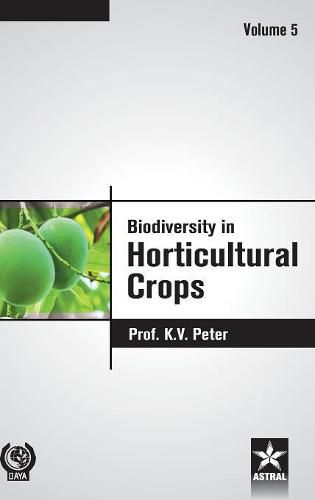Readings Newsletter
Become a Readings Member to make your shopping experience even easier.
Sign in or sign up for free!
You’re not far away from qualifying for FREE standard shipping within Australia
You’ve qualified for FREE standard shipping within Australia
The cart is loading…






The present volume V of series BIODIVERSITY OF HORTICULTURAL CROPS is continuation of earlier volumes, it carries 20 chapters contributed by 42 eminent scientists which covers soil biodiversity, selected crop biodiversity for livelihood security, balancing conservation with development, biodiversity conservation and management in India. Cold desert horticultural crops like cactus (dragon fruit) and their conservation have received special attention. DNA Bar coding as a tool to compliment plant taxonomy is dealt both in theory and practice. Detailed biodiversity profiles of vegetables, indigenous vegetables, common beans, onion, fruits like bael, pear, indigenous mangoes, spices like turmeric, ginger and sub-tropical turmeric, Myristica and related genera are dealt in detail. Conservation of Rare, Endangered and Threatened (RET) medicinal plants, betel vine, dwarf coconuts and annual ornamentals like carnations are elaborated. Information on International Convention for the Protection of new varieties of plants, The Biological Diversity Act-2002 and Agro-Biodiversity hotspots of India are given as Appendices. This volume will be useful not only for students and teachers but also for environmentalists, horticulturists, eco-planners, botanists, agriculturists, researchers as well as people having concern for the horticultural crops.
$9.00 standard shipping within Australia
FREE standard shipping within Australia for orders over $100.00
Express & International shipping calculated at checkout
The present volume V of series BIODIVERSITY OF HORTICULTURAL CROPS is continuation of earlier volumes, it carries 20 chapters contributed by 42 eminent scientists which covers soil biodiversity, selected crop biodiversity for livelihood security, balancing conservation with development, biodiversity conservation and management in India. Cold desert horticultural crops like cactus (dragon fruit) and their conservation have received special attention. DNA Bar coding as a tool to compliment plant taxonomy is dealt both in theory and practice. Detailed biodiversity profiles of vegetables, indigenous vegetables, common beans, onion, fruits like bael, pear, indigenous mangoes, spices like turmeric, ginger and sub-tropical turmeric, Myristica and related genera are dealt in detail. Conservation of Rare, Endangered and Threatened (RET) medicinal plants, betel vine, dwarf coconuts and annual ornamentals like carnations are elaborated. Information on International Convention for the Protection of new varieties of plants, The Biological Diversity Act-2002 and Agro-Biodiversity hotspots of India are given as Appendices. This volume will be useful not only for students and teachers but also for environmentalists, horticulturists, eco-planners, botanists, agriculturists, researchers as well as people having concern for the horticultural crops.